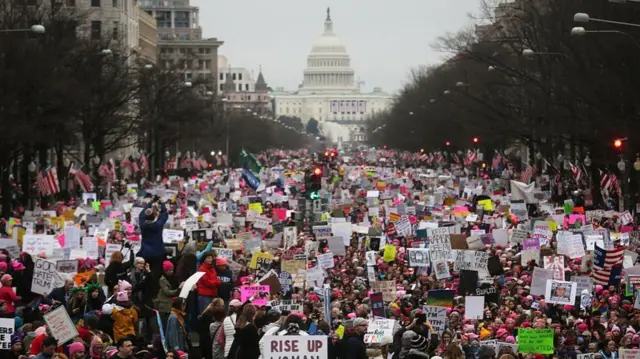The march that started it allpublished at 14:34 Greenwich Mean Time
 Holly Honderich
Holly Honderich
Reporting from Washington DC
 Image source, Getty Images
Image source, Getty ImagesIn the aftermath of Donald Trump’s surprise 2016 victory over Hillary Clinton, the first march came together at an impressive clip, transforming from a couple of disconnected Facebook posts from women calling for a protest into a blueprint for a national movement within weeks.
By 21 January, hundreds of thousands of people were pouring into the nation’s capital, bringing crowds nearly three times the size of Trump’s inauguration the day before.
In Washington and at coordinated events across the US, women carried signs railing against Trump and sported pink knit “pussyhats” – a pointed reference to the Access Hollywood tape in which Trump bragged about grabbing women’s genitals.
“I had never seen anything this crowded, you could barely move,” said Sharon Baseman, a Democratic activist in Michigan who travelled to DC for the 2017 march.
“It was overwhelming and it was inspiring.”
In the years that followed, the Women’s March remained the face of the fight against Trump’s Make America Great Again (MAGA) agenda. The movement helped unite the Democratic Party against Trump, a strategy enabled them to retake the White House in 2020.
But in the wake of Trump’s victory in November, leaders must grapple with the resistance’s failures, and its future.
